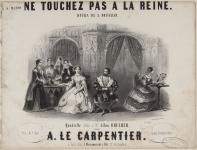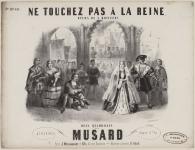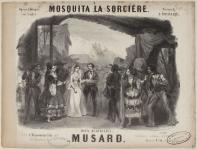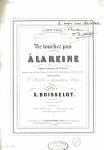
Xavier BOISSELOT
1811 - 1893
Composer
Born in Montpellier, Xavier Boisselot lived from 1823 in Marseille, where his father, Jean-Louis Boisselot, had founded a piano manufacturing firm three years previously. In 1830 he entered the Paris Conservatoire, where he studied counterpoint and fugue with Fétis and composition with Le Sueur (whose son-in-law he later became). In 1836 he won the Prix de Rome for his cantata Velléda, and went on to compose the ballet Cléopâtre (in collaboration with Théophile Gautier), the operas Ne touchez pas à la reine (successfully premièred at the Opéra-Comique in 1847), Mosquita la sorcière (Théâtre Lyrique, 1851), L’Ange déchu (excerpts from which were played in Marseille in 1869), as well as many song settings. In 1850, following the death of his brother Louis, he set aside his career as a composer and assumed the management of the family business (the parent company in Marseille and a branch in Barcelona). Reputed for their quality, his grand pianos were awarded a first-class medal at the 1855 Exposition Universelle and earned him the highest French order of merit, the Legion of Honour. According to Fétis, the Marseille and Barcelona factories delivered 500 and 400 pianos, respectively, that year. Boisselot also developed an activity as a music publisher in Paris after buying up several publishing houses (including Meissonnier Fils and Mayraud); this enabled him to have operas by composers such as Adam, Hérold, Bellini and Donizetti in his catalogue. He was obliged to cease that activity, however, in 1859, poor management having led to liquidation. After a serious fire at the Barcelona factory in 1865, he left the piano firm to his nephew. Xavier Boisselot spent the last years of his career as inspector-general of music schools and music theatres in Marseille.







